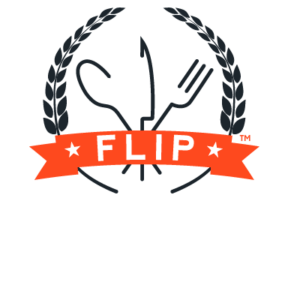A new year brings new developments in the food industry—some exciting, some surprising, but all relevant and important for food and beverage business owners to understand.
On March 20, 2024, Food Liability Insurance Program (FLIP) hosted a webinar with Clint Bishop, Vice President of Marketing at Veracity Insurance Solutions, and JoAnne Hammer, Certified Insurance Counselor (CIC) and FLIP Program Manager, to discuss the findings in our 2024 Food Industry Economic and Trend Outlook Report.
Bishop and Hammer dove deep into the facts and figures outlined in the report and provided their commentary and actionable advice to food business owners.
Food Liability Insurance Basics
The webinar kicked off with a brief overview of food liability insurance basics. Hammer, who has more than two decades of experience in the insurance industry, touched on the types of coverages all food business owners need, such as general liability and product liability insurance, and what’s covered under each.
Hammer also mentioned what makes FLIP unique in the insurance world: we’ve crafted a policy that includes the most important coverage types for your business.
- General Liability
- Product Liability
- Damage to Premises Rented to You
More than that, we offer various additional coverages you can add to create an insurance policy that is truly customized to suit your business, including:
- Tools and Equipment
- Cyber Liability
- Liquor Liability
- And more

State of the Food Industry in 2024
In general, food businesses are growing, with food trucks, caterers, and food vendors seeing faster-than-average growth. However, business owners remain cautiously optimistic about growth in 2024.
According to Bishop, one of the significant reasons behind this is the cost of food.
Two thirds of FLIP customers surveyed expect their food costs to rise this year, likely because of the amount of inflation we’ve experienced over the past couple of years. However, these rising costs do appear to be slowing down.
Roughly 90% of FLIP customers expect their food ticket prices to increase this year, probably due partly to these same inflationary pressures. However, the price of wholesale food has decreased and it’s looking more and more like this period of inflation will stabilize.
Key Takeaway: Not only are food business owners optimistic about 2024, but the numbers support this general feeling.
Consumer Behavior Trends in the Food Industry
Our economic report contains data about a wide variety of consumer behavior trends. Hammer touched on several of these trends, including:
- People are eating out more than ever and spending more than before. The average cost of a meal in 2023 was $16 per person.
- Tipping is on the rise, and digital tipping is all the rage. 64% of people leave an 11% higher tip when they can do so digitally versus tipping in cash.
- The trend towards going totally cashless has slowed. We saw a rise in this behavior during the pandemic, but 69% of FLIP survey respondents said they have no plans to go cashless this year.
Key Takeaway: Consider the trends in consumer behavior when you decide to make changes to your menu or way of doing business. You don’t have to adjust to suit all trends, but if something makes sense for your business and it’s what your customers expect, it might be worth your time.

Tech and Marketing for Food Businesses
Bishop emphasized the continuing trend of businesses going digital, not just with an increase in digital payments but in digital ordering as well. He recommended business owners create mobile-friendly menus and allow customers to order online if possible.
He also highlighted the biggest reasons to buy that we’re seeing for consumers in the food industry, which are:
- Word-of-mouth marketing
- Foot traffic and/or curb appeal
- Social media
On this last point, Bishop mentioned the importance of creating “Instagram-worthy” dishes. If your customers think your plating is visually appealing, they’ll be more likely to share it on social media, which is great word-of-mouth marketing for your business.
(Check out our tips on Instagram marketing for food businesses.)
Key Takeaway: No matter how amazing your product is, it probably won’t change consumer behavior. Meet your customers where they are to reap the benefits of your marketing strategy.
State of the Food Insurance Industry in 2024
Last year, FLIP saw a 2.5% increase in the total number of food liability claims. The majority of these were made up of the following situations:
- An accident that caused damage or injury to a third party (18% of claims).
- Theft (13% of claims).
- Equipment failure that led to food spoilage (13% of claims).
While all types of food businesses are at risk of getting hit with a claim, the businesses with the highest number of claims last year were caterers, food trucks, trailers, and farmers market vendors.
Key Takeaway: The average payout for a claim was $4,600, with many payouts being much higher than that. Insurance is necessary to shield your business from getting hit with a financially damaging claim.
Live Webinar Q&A and Final Thoughts
At the end of the webinar, Bishop and Hammer took questions from the audience and summed up their thoughts on the data from the report.
Overall, the market for food businesses is strong and the outlook is positive. Food businesses continue to grow and consumer trends are promising.
As always, FLIP is here to support your business with affordable, quality coverage so that you can focus on continued success instead of worrying about getting hit with a claim.
For more details, watch the full webinar!

By Alex Hastings
Alex is a Marketing Copywriter at Food Liability Insurance Program (FLIP). In her free time, she enjoys reading, birding, traveling, and finding any excuse to get brunch.


